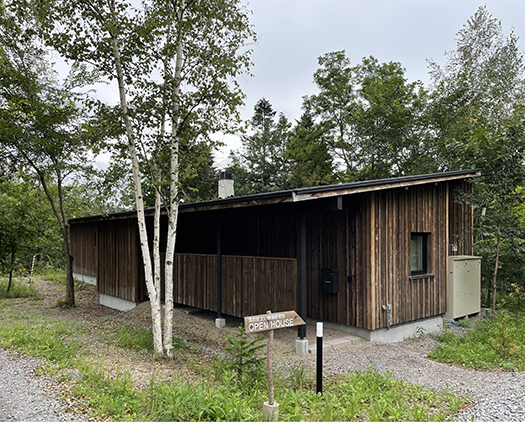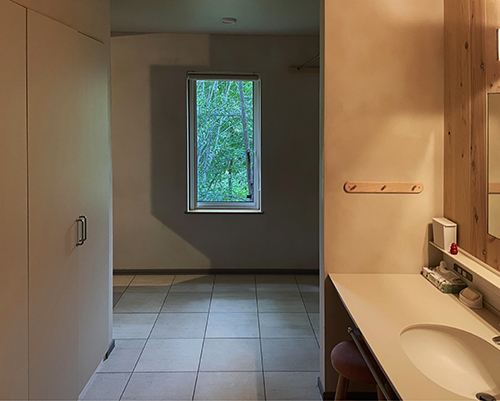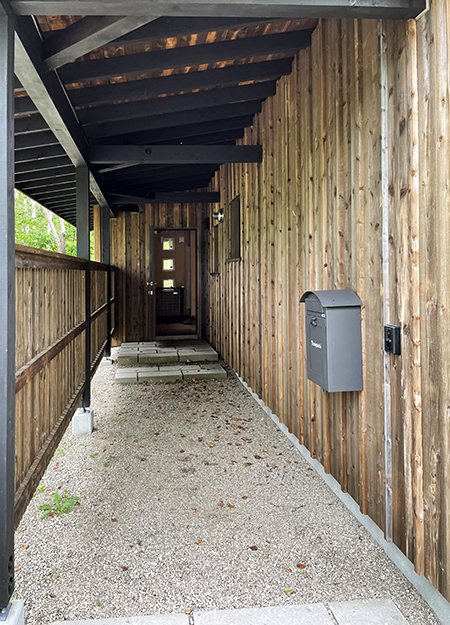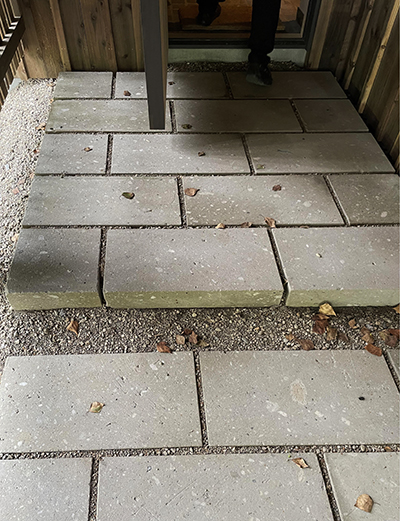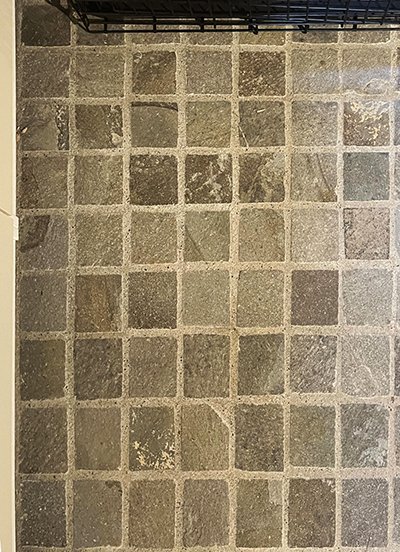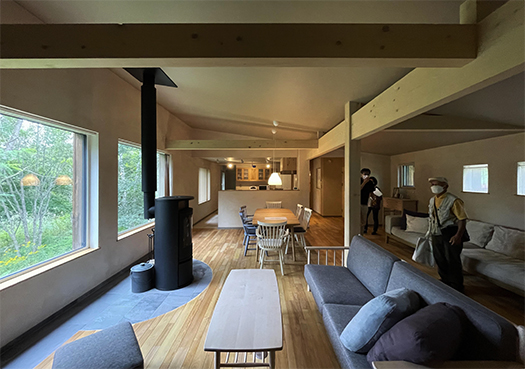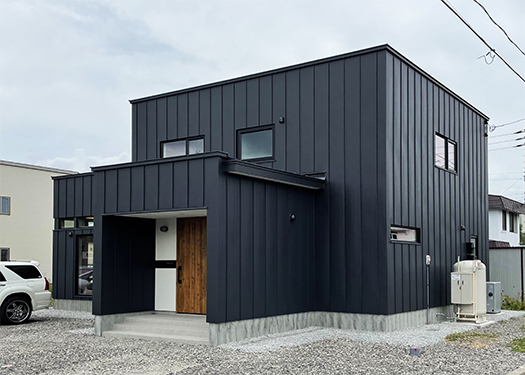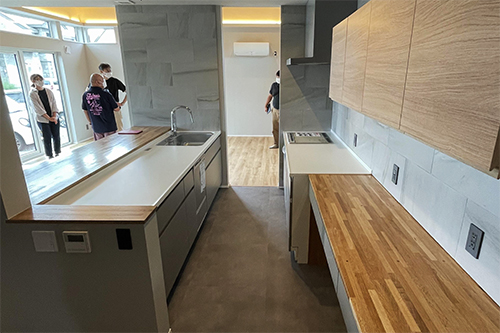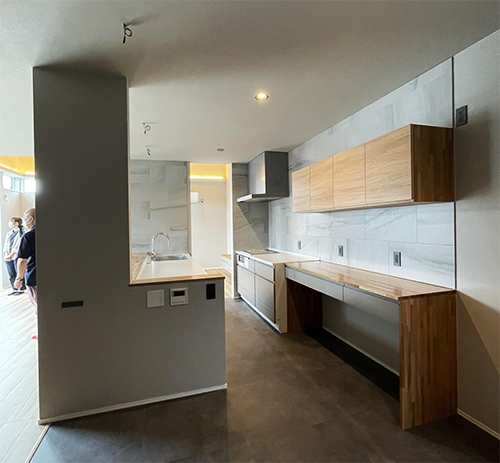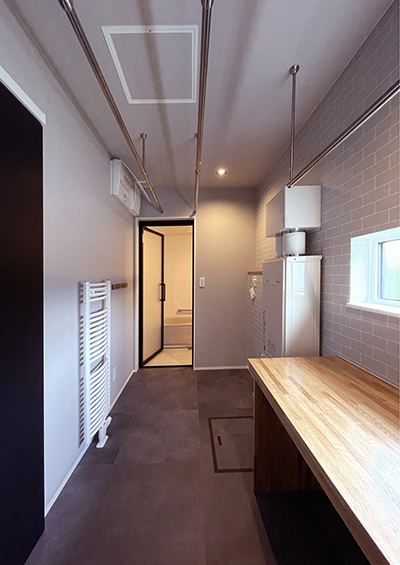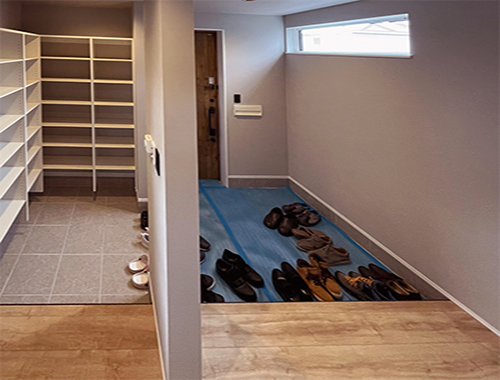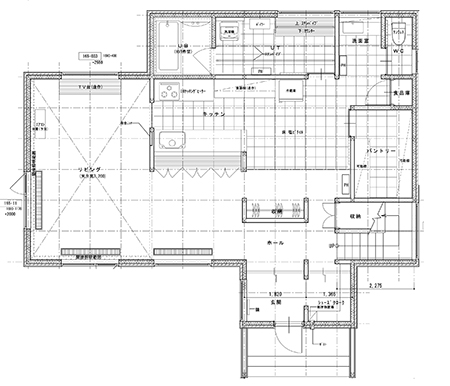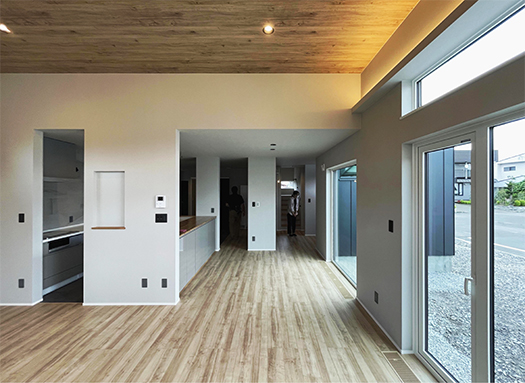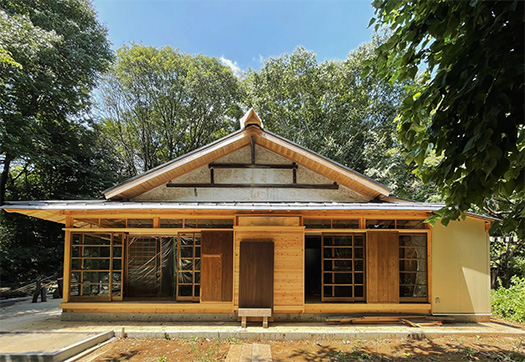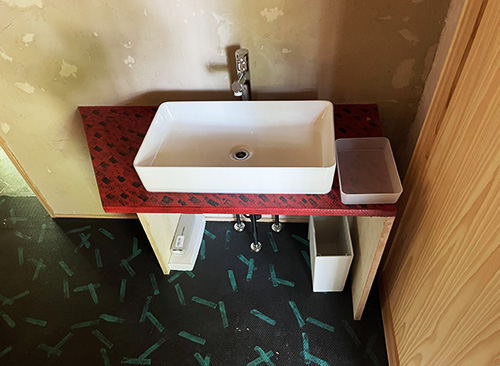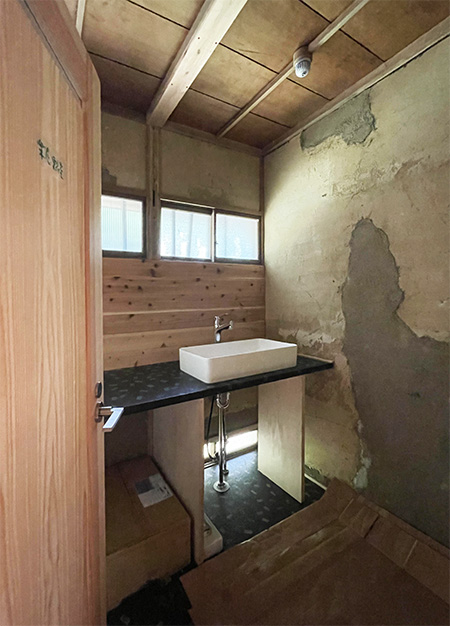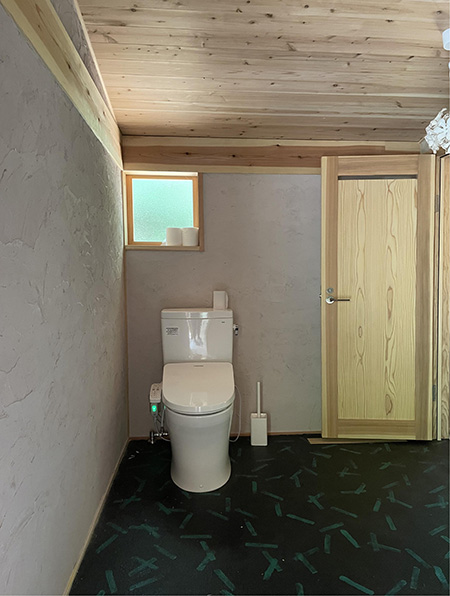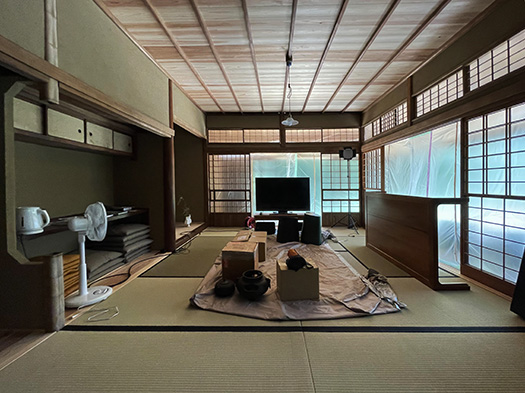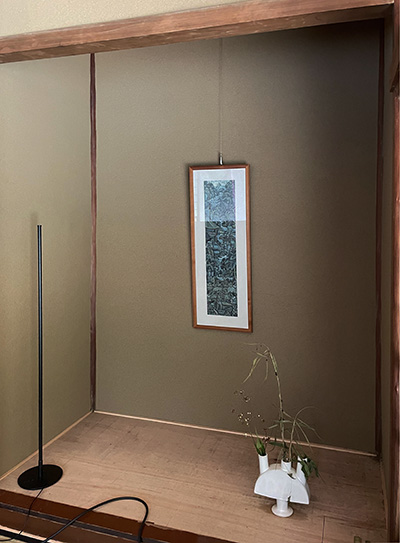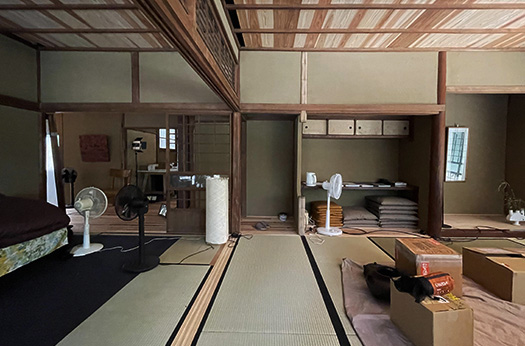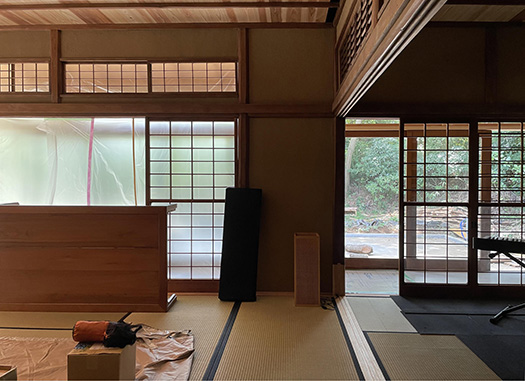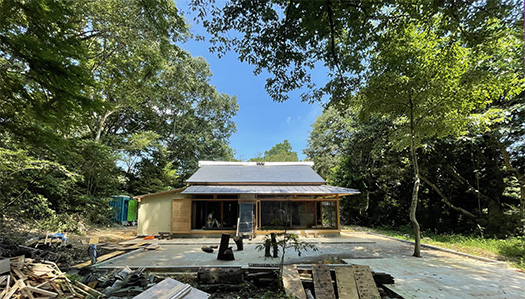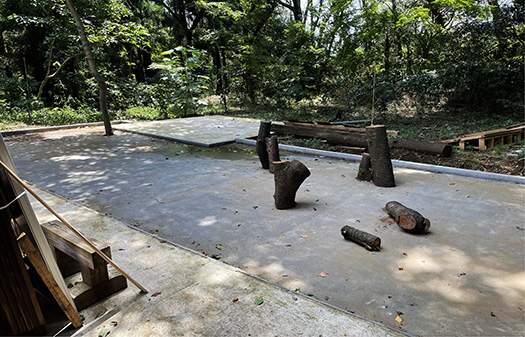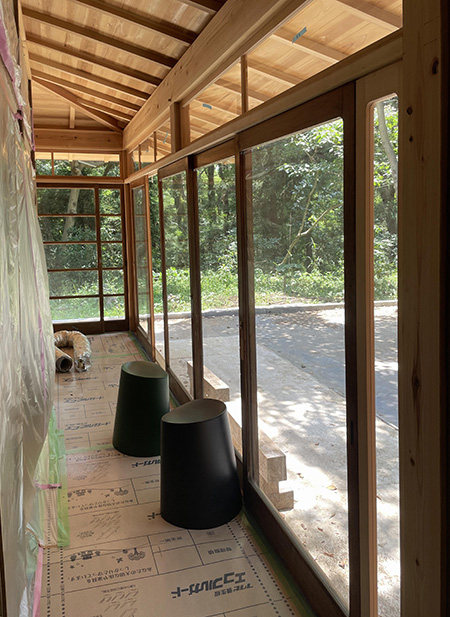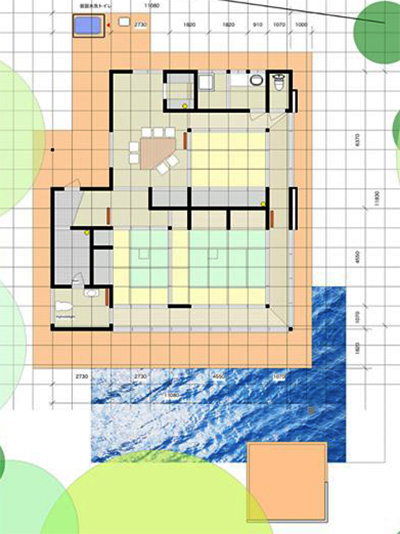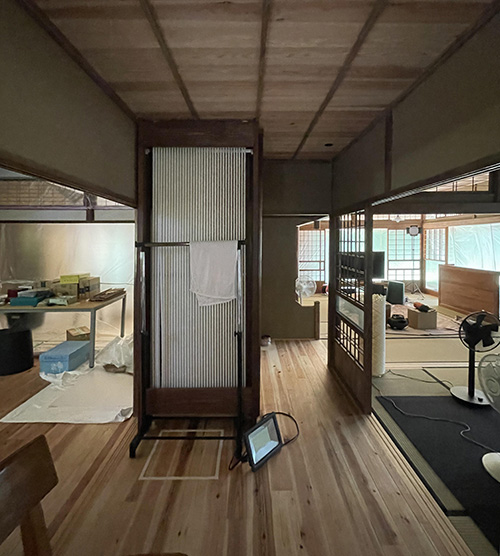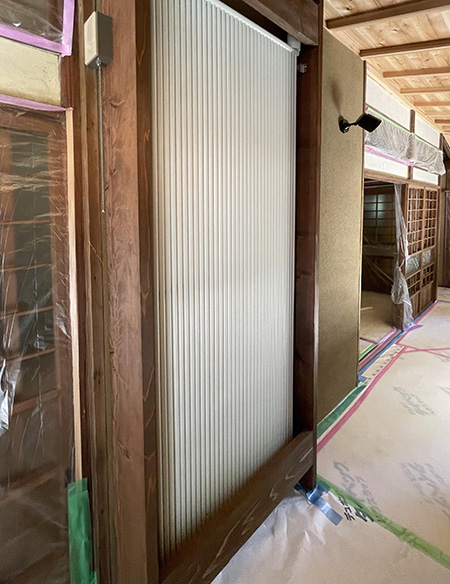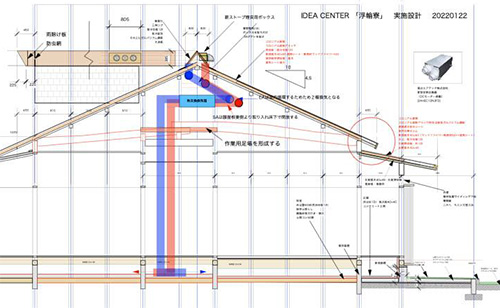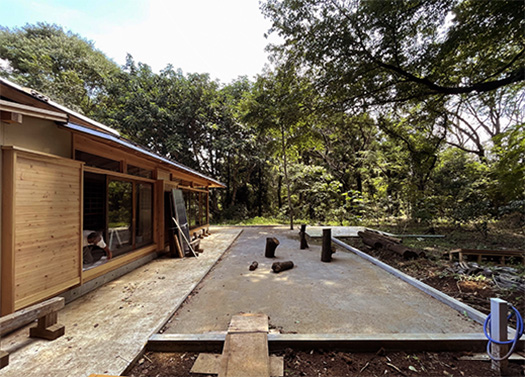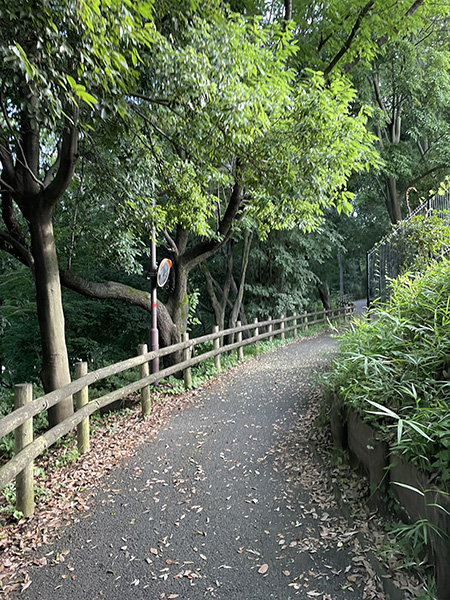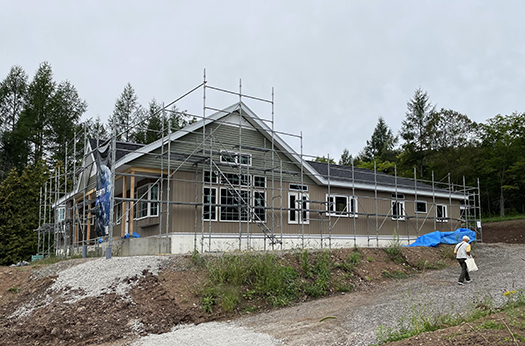

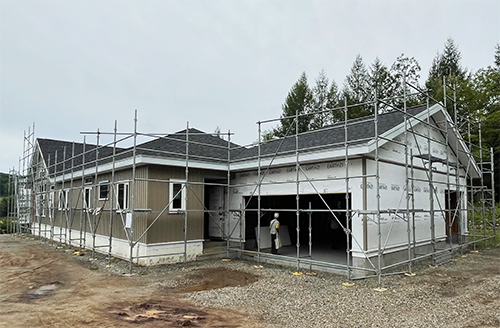
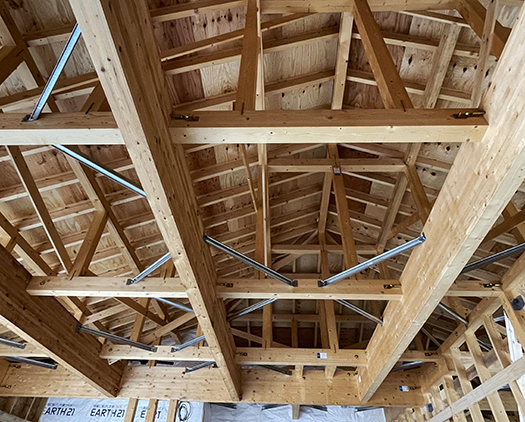
旭川のイマドキ住宅見学、その3軒目は北海道ハウジングさんの構造現場。
北海道の住宅性能的現在地点はいま、北海道庁建築指導課を中心にして
いわゆるZEHの論議からスタートし、その先の2030年、2050年の
世界的な目標基準をどのように地域としてテーマ目標を定めるか、
活発な論議が進行しています。
審議会は国の住宅施策検討の中心メンバーでもある鈴木大隆さんが
本来の道総研理事としての立場から「座長」として主導。
わたしもその論議には参加させていただいています。
今2022年期の集中的論議ではすでに3回ものワーキング会合を開催。
鈴木座長としては「これまでの住宅施策についての北海道の先導的立場を
しっかりとわきまえながら、先人の思いを継承していきたい」という意見。
折に触れてそうしたテーマ意識が表出されて
研究開発主体の北総研をしっかり領導する論議が展開しています。
この10月には国の「住宅月間」中央イベントが札幌開催。
そのタイミングでこの論議の中間結果が発出されていく可能性もあります。
旭川の工務店グループは住宅性能開発では北海道内でも最先端。
本部が旭川にある北総研の研究開発の技術的パートナーとして経験蓄積。
日本でいちばん寒くて、雪も多いという地域特性から
実証検証を研究者と産学協働してきた歴史があります。
新住協活動でも、鎌田紀彦先生とともに最先端技術開発に取り組んできた。
そういう地域です。しかし一方東京都が象徴的ですが
ZEHの最大要素素材である太陽光発電では冬の多雪条件から
屋根面での搭載は非常に困難を伴う地域的ハンディを負っている。
積雪による稼動ロスを「壁面設置」などでクリアするとか、
さまざまな実証検証に踏まえた手法開発が続いてきている。
さらに広い北海道では多様な気候環境に細分化されてもいる。
そういう論議を経て、2050年も見据えた方向性が確定してきている。
北海道住宅局建築指導課からの情報発出を待って
大いに情報発信していきたいと考えています。
この住宅は昨日までご紹介の家と同じ東川の高台の家。
こちらでは木々が伐採された環境になっています。
敷地は広大なので雪は落雪屋根としていますが冬季の利便性を考えて
駐車スペースは屋内に設定している。
3番目の写真がその屋根架構の様子です。
積雪対応をしなければいけないが、カーポートなので柱の類は
必要最小限化する必要があるため、梁組・小屋組はまことに重厚な構造。
積雪対応という意味で構造面でもハンディキャップはある。
まさに「課題の最先端地域」北海道でも最たる地域性。
しかしそういう住宅性能実験地域でもあることで、
作り手たちの先取精神は高いレベル。
どうやったら構造の強化とコストのバランスを取れるのか、
実務家たちの実践的な白熱した論議が交わされていました。
English version⬇
Structure, Insulation, Airtightness, and Heated Discussion: Asahikawa 2022 House Building Visit-5
Hokkaido, a region at the forefront of the issue, is formulating a policy in response to the national declaration on decarbonization and will issue measures for the year 2050. Asahikawa 2022 House Building
The third house on our tour of Asahikawa’s “Imadoki” houses is the structural site of Hokkaido Housing.
The current state of housing performance in Hokkaido is now being discussed by the Building Guidance Division of the Hokkaido Government.
The current state of housing performance in Hokkaido starts with the discussion of the so-called ZEH, and how to set global target standards for the years 2030 and 2050.
How can we set a theme target as a region for the global target standard in 2030 and 2050?
Active discussions are underway.
Mr. Hirotaka Suzuki, who is also a core member of the national government’s housing policy review committee, has been a member of the council.
I also took part in the discussion.
I have also participated in the discussions.
Three working sessions have already been held in the intensive discussions for the current fiscal year 2022.
As Chairperson Suzuki says, “While keeping in mind Hokkaido’s leading position in housing policies to date
We would like to inherit the thoughts of our predecessors while keeping in mind Hokkaido’s leading position on housing policies.
He expressed his awareness of this theme from time to time.
Discussions are being held to firmly lead the North Research Institute, which is the main research and development institute.
This October, the central event of the national “Housing Month” will be held in Sapporo.
It is possible that the interim results of this discussion will be issued at that time.
Asahikawa’s construction group is at the forefront of housing performance development in Hokkaido.
The group has accumulated experience as a technical partner in the research and development of the North Research Institute, which is headquartered in Asahikawa.
The region is the coldest and snowiest in Japan.
We have a long history of collaboration with researchers and industry-academia for verification and validation.
In the Shinjyukyo activities, we have been working with Dr. Norihiko Kamata to develop cutting-edge technologies.
This is the kind of region we have. On the other hand, Tokyo is a symbolic example.
However, as Tokyo is symbolic of, solar power generation, which is the most important element of ZEH, is very difficult to install on roofs due to the heavy snowfall in winter.
The roof surface of solar power generation, which is the most important element of ZEH, is at a disadvantage in the region due to heavy snowfall in winter.
The operational loss caused by snow accumulation can be cleared by “wall mounting” and so on.
The development of new methods has continued based on a variety of demonstrations and verifications.
Furthermore, Hokkaido, a large island in Japan, is subdivided into a variety of climatic environments.
Through these discussions, the direction of the project is being finalized with an eye toward 2050.
We are waiting for the Building Guidance Division of the Hokkaido Housing Bureau to issue information.
We hope to provide a great deal of information on this project.
This house is located on a hill in Higashikawa, the same house we introduced yesterday.
Here, the trees have been cleared and the environment has been cleared.
The site is vast, so the snow is set to fall off the roof, but for winter convenience
The parking space is set indoors.
The third photo shows its roof structure.
The third photo shows the roof structure, which must be able to cope with snow accumulation.
The beam and shed frames are very massive in order to minimize the need for columns.
In terms of snow accumulation, the structure is also at a disadvantage.
This is the most advanced region in Hokkaido, which is truly a “cutting-edge region in terms of issues.
However, the fact that this is also a region that experiments with housing performance has made it a place where the spirit of forward-thinking builders is high.
The creators have a high level of forward-thinking spirit.
How can we balance structural reinforcement and cost?
Practitioners engaged in heated discussions on how to balance structural reinforcement and cost.
Posted on 9月 7th, 2022 by 三木 奎吾
Filed under: 住宅取材&ウラ話, 住宅性能・設備 | No Comments »


